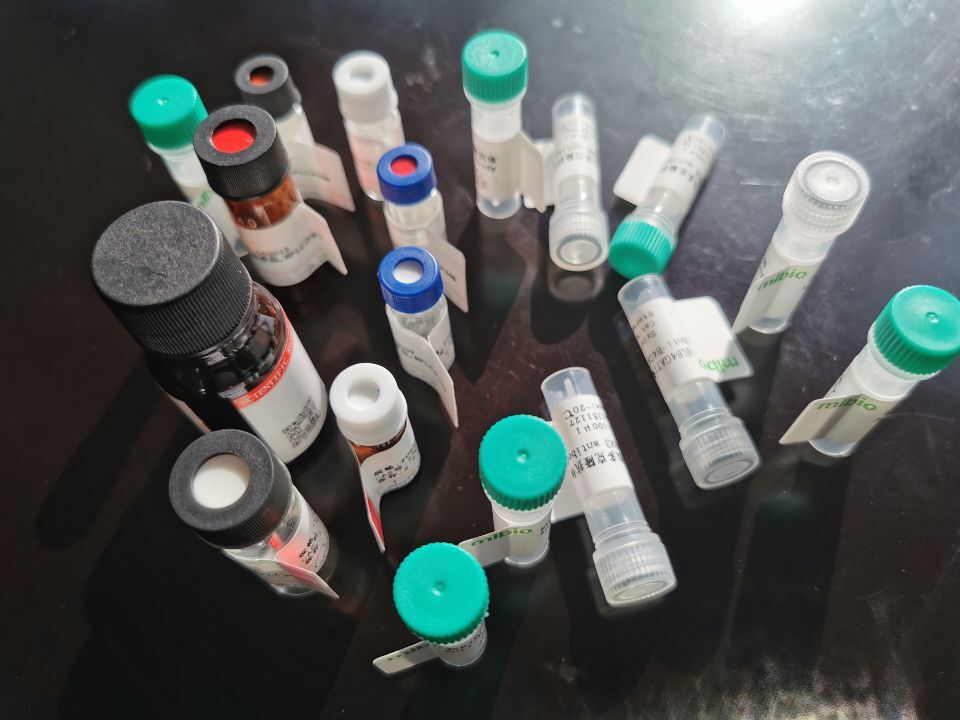中文名称:HLA-DRB1 抗原(重组蛋白)
英文名称: HLA-DRB1 Antigen (Recombinant Protein)
别 名: major histocompatibility complex, class II, DR beta 1; SS1; DRB1; HLA-DRB; HLA-DR1B
储 存: 冷冻(-20℃)
相关类别: 抗原
概 述:
|
Fusion protein corresponding to a region derived from 30-266 amino acids of human HLA-DRB1 |
|
Full name: |
major histocompatibility complex, class II, DR beta 1 |
|
Synonyms: |
SS1; DRB1; HLA-DRB; HLA-DR1B |
|
Swissprot: |
Q5Y7A7 |
|
Gene Accession: |
BC007920 |
|
Purity: |
>85%, as determined by Coomassie blue stained SDS-PAGE |
|
Expression system: |
Escherichia coli |
|
Tags: |
His tag C-Terminus, GST tag N-Terminus |
|
Background: |
HLA-DRB1 belongs to the HLA class II beta chain paralogs. The class II molecule is a heterodimer consisting of an alpha (DRA) and a beta chain (DRB), both anchored in the membrane. It plays a central role in the immune system by presenting peptides derived from extracellular proteins. Class II molecules are expressed in antigen presenting cells (APC: B lymphocytes, dendritic cells, macrophages). The beta chain is approximately 26-28 kDa. It is encoded by 6 exons. Exon one encodes the leader peptide; exons 2 and 3 encode the two extracellular domains; exon 4 encodes the transmembrane domain; and exon 5 encodes the cytoplasmic tail. Within the DR molecule the beta chain contains all the polymorphisms specifying the peptide binding specificities. Hundreds of DRB1 alleles have been described and typing for these polymorphisms is routinely done for bone marrow and kidney transplantation. DRB1 is expressed at a level five times higher than its paralogs DRB3, DRB4 and DRB5. DRB1 is present in all individuals. Allelic variants of DRB1 are linked with either none or one of the genes DRB3, DRB4 and DRB5. There are 4 related pseudogenes: DRB2, DRB6, DRB7, DRB8 and DRB9. |
 购物车
购物车 帮助
帮助
 021-54845833/15800441009
021-54845833/15800441009
